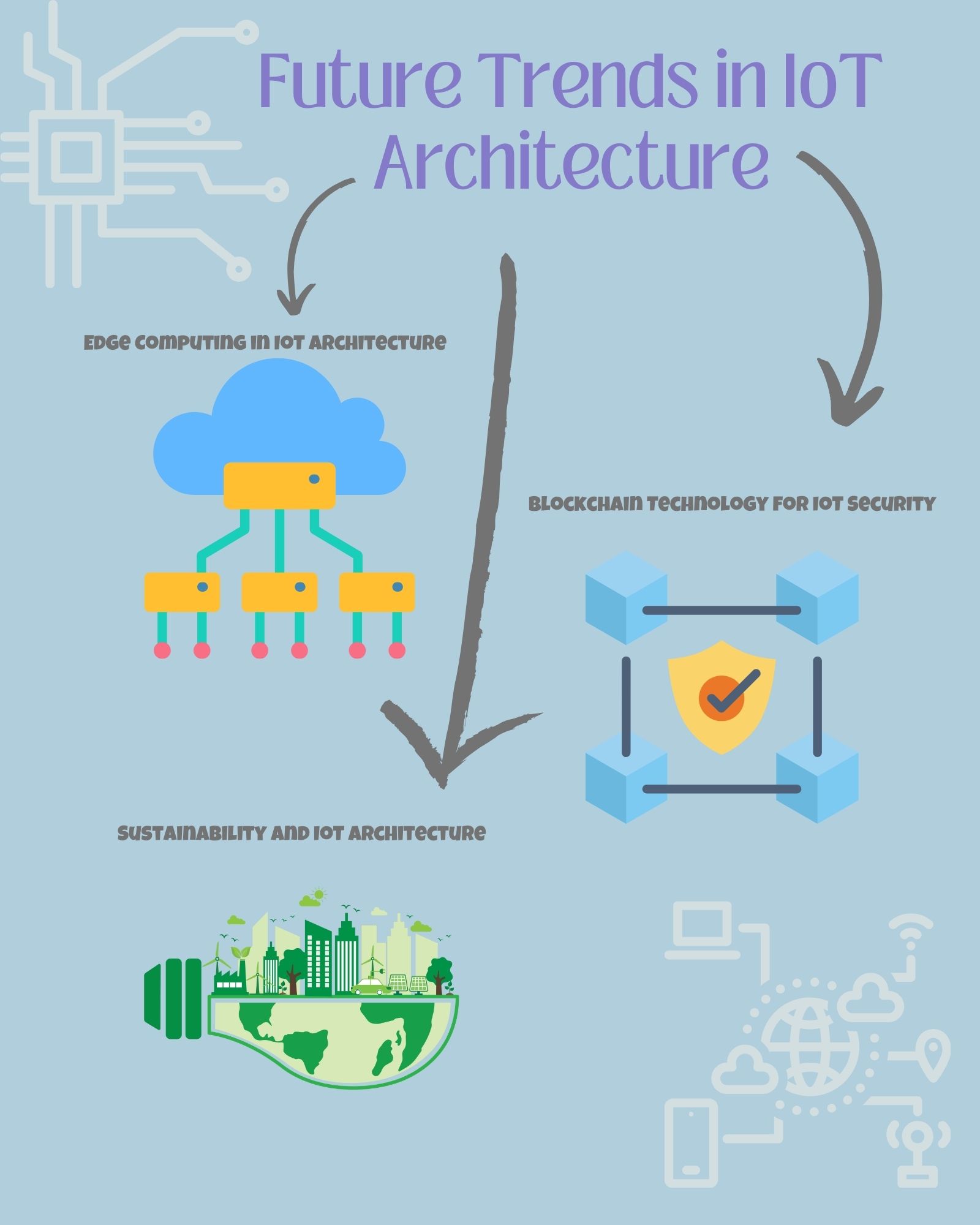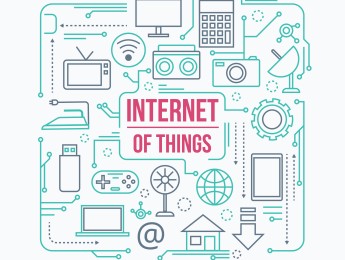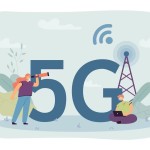- Table of Contents
- Introduction
- What Is IoT?
- What Is IoT Architecture?
- Layers of IoT Architecture
- 1. Perception Layer
- 2. Network Layer
- 3. Middleware Layer
- 4. Application Layer
- The Importance of IoT Architecture
- A. Scalability and Flexibility
- B. Data Management
- C. Interoperability
- D. Security and Privacy
- Internet of Things (IoT) Architecture Examples
- A. Smart Cities
- B. Industrial IoT (IIoT)
- C. Healthcare
- D. Agriculture
- E. Oil and Gas Industry
- Future Trends and Challenges in IoT Architecture
- A. Edge Computing in IoT Architecture
- B. Blockchain Technology for IoT Security
- C. Sustainability and IoT Architecture
- Challenges in IoT Architecture
- Security Concerns
- Interoperability Hurdles
- Privacy Dilemmas
- Scalability Challenges
- Conclusion
Introduction
The rapid advancement of technology has given rise to a connected world where devices, sensors, and systems interact seamlessly to gather and exchange data. This interconnectedness forms the foundation of the Internet of Things (IoT), a revolutionary concept that is transforming industries and societies. In this blog post, we will dive into the intricacies of IoT architecture - the underlying framework that enables the seamless integration and operation of IoT systems. We will explore its layers, understand its significance, and explore real-world examples showcasing its transformative power. So, let's embark on a journey to unravel the world of IoT architecture and discover how it shapes the future of connected devices and systems.
What Is IoT?
The Internet of Things refers to the vast network of physical devices, vehicles, appliances, and other objects embedded with sensors, software, and connectivity capabilities. These interconnected devices collect and exchange data, enabling them to communicate and interact with one another, as well as with humans. The ultimate goal of IoT is to enhance efficiency, improve decision-making, and create innovative new services and applications.
What Is IoT Architecture?
IoT architecture encompasses the design and structure of the various components that form an IoT ecosystem. It provides a blueprint for connecting and coordinating an IoT system's numerous devices, networks, protocols, and applications. A well-designed IoT architecture ensures seamless data flow, interoperability, scalability, security, and efficient management of IoT solutions.
Layers of IoT Architecture
IoT architecture is typically composed of multiple layers, each serving a specific purpose and contributing to the system's overall functionality. Here are the key layers of IoT architecture:
1. Perception Layer
The Perception Layer serves as the eyes and ears of the IoT ecosystem. It comprises sensors, actuators, and edge devices strategically placed in the physical environment. Sensors detect changes or events in the surroundings, such as temperature variations, motion, or light intensity. Actuators, on the other hand, initiate actions based on the data received from sensors. For instance, in a smart home, temperature sensors can detect a rise in room temperature, triggering the air conditioning system through actuators to maintain the desired climate.
2. Network Layer
The Network Layer is the backbone of IoT architecture, responsible for transmitting data between devices securely and efficiently. Various communication protocols such as Wi-Fi, Bluetooth, Zigbee, and cellular networks are utilised in this layer. Wi-Fi is commonly used for high-bandwidth applications, while Bluetooth is ideal for short-range, low-power connections between devices. Cellular networks provide broader coverage and are crucial for IoT applications in remote or outdoor environments. This layer ensures that data collected from sensors in the Perception Layer is transmitted reliably to the next stages of the IoT system.
3. Middleware Layer
The Middleware Layer acts as the intermediary, orchestrating data processing, device management, and the integration of different protocols and data formats. This layer is instrumental in ensuring that data flows seamlessly between devices and applications. It handles data transformation, protocol translation, and message routing tasks. Middleware solutions provide the necessary abstraction, allowing different devices and applications to communicate effectively without needing to understand the intricacies of each other's protocols. The Middleware Layer plays a vital role in integrating diverse components within the IoT architecture by enabling interoperability.
4. Application Layer
The Application Layer is where the magic of IoT happens for end-users. It encompasses the software applications and user interfaces that enable humans to interact with IoT systems, monitor connected devices, and gain meaningful insights from the data collected. In a smart home, this layer could manifest as a user-friendly mobile app allowing homeowners to control lighting, security systems, and thermostats remotely. Moreover, sophisticated analytics and machine learning algorithms are employed in this layer to process the data collected from various sensors. These analyses generate valuable insights, enabling businesses and individuals to make data-driven decisions, optimise processes, and enhance overall efficiency.
Protocol | Range | Data Rate | Power Consumption | Use Cases |
Wi-Fi | Short to Medium | High | High | Smart Homes, Offices, Industrial Automation |
Bluetooth | Short | Low to Medium | Low | Wearables, Smart Devices, Personal Area Networks |
Zigbee | Short to Medium | Low to Medium | Low | Home Automation, Industrial Control, Healthcare |
Cellular | Long | Low to High | Medium to High | Smart Vehicles, Agriculture, Remote Monitoring |
Table 1: Comparison of communication protocols in IoT
By comprehensively exploring the layers of IoT architecture, we gain valuable insights into the complex interplay between devices, networks, middleware, and applications. This understanding is fundamental for businesses, researchers, and developers, enabling them to harness the full potential of IoT technology and create transformative solutions for the connected world.
The Importance of IoT Architecture
IoT architecture plays a pivotal role in the success of IoT implementations, providing a solid foundation for the interconnected ecosystem. However, not all companies are realising that yet, especially small businesses. In fact, statistics show that during 2021, nearly half of the large enterprises, accounting for 48%, embraced the Internet of Things (IoT) technology, highlighting its integration into mainstream business operations. In contrast, small enterprises lagged behind, with only 26% of them adopting IoT solutions during the same period. Let's delve deeper into why you should be leveraging IoT in business operations:
A. Scalability and Flexibility
Scalability is a cornerstone of effective IoT architecture. As the number of connected devices surges, the architecture must gracefully accommodate this growth without compromising performance. Imagine a smart city scenario where the number of sensors monitoring traffic, waste management, and energy consumption increases. A well-designed IoT architecture ensures that the system can handle this influx of data, maintaining efficiency even as the network expands.
Moreover, flexibility is paramount. IoT landscapes are dynamic, with new devices, technologies, and services constantly emerging. A robust architecture allows for the seamless integration of these innovations. For instance, in a smart home ecosystem, where new smart devices are frequently introduced, the architecture should support effortless integration, ensuring users can add devices without disrupting the existing setup. This adaptability future-proofs IoT solutions, allowing them to evolve alongside technological advancements.
B. Data Management
At the heart of every IoT application lies a colossal amount of data. Efficient data management is essential to derive meaningful insights from this data deluge. IoT architecture facilitates data collection, storage, processing, and analysis from diverse sources. Consider a manufacturing setting equipped with IoT sensors. These sensors continuously collect data on machine performance, production rates, and quality metrics. A well-designed architecture processes this data, enabling real-time monitoring, identifying bottlenecks, predicting maintenance needs, and optimising production processes. Effective data management enhances operational efficiency and empowers organisations to make informed decisions, driving innovation and competitiveness.
C. Interoperability
The IoT landscape is characterised by many devices, protocols, and platforms, each with unique specifications. Interoperability, the ability of different systems to communicate and work together seamlessly, is a challenge IoT architecture effectively addresses. By defining standard protocols and interfaces, IoT architecture enables devices from various manufacturers to collaborate harmoniously. For example, IoT architecture in a smart home environment allows smart thermostats, lighting systems, security cameras, and voice assistants from different brands to interact cohesively. This interoperability simplifies user experience and empowers businesses to leverage existing infrastructure, avoiding vendor lock-in and fostering a vibrant ecosystem of interconnected devices.
Architecture Component | Significance |
Scalability | Accommodates the increasing number of devices and data sources |
Flexibility | Allows seamless integration of new devices and technologies |
Data Management | Facilitates efficient collection, storage, processing and analysis of data |
Interoperability | Enables devices from different manufacturers to communicate effectively |
Security and Privacy | Implements measures to protect data integrity, confidentiality and authenticity |
Table 2: IoT architecture components and their significance
D. Security and Privacy
Security is paramount in IoT deployments, especially when dealing with sensitive data such as healthcare records or critical infrastructure information. IoT architecture incorporates robust security measures to safeguard data integrity, confidentiality, and authenticity. Secure communication channels, encryption protocols, and access control mechanisms are implemented at various levels of the architecture. For instance, in a healthcare IoT scenario, patient data transmitted between wearable devices and medical servers must be encrypted and authenticated to prevent unauthorised access. By ensuring end-to-end security within the architecture, organisations can mitigate risks associated with data breaches, unauthorised access, and malicious attacks, instilling confidence among users and stakeholders.
By focusing on the importance of scalability, data management, interoperability, and security, IoT architecture sets the stage for successful and reliable IoT deployments. It enables organisations to harness the full potential of IoT, driving innovation, efficiency, and improved decision-making.
Internet of Things (IoT) Architecture Examples
The theoretical understanding of IoT architecture finds its true essence in real-world applications. Let's explore diverse sectors where IoT architecture has been successfully implemented, revolutionising industries and improving individuals' quality of life.
A. Smart Cities
Smart cities exemplify the transformative power of IoT architecture. Cities are evolving into efficient, sustainable hubs by integrating various systems like traffic management, waste management, energy grids, and public services. Sensors placed strategically across the city collect data on traffic flow, energy consumption, waste levels, and environmental factors. This data, transmitted through IoT architecture, enables city administrators to optimise resource allocation, alleviate traffic congestion, reduce energy consumption, and enhance overall quality of life for residents. For instance, smart traffic lights adjust their timings based on real-time traffic data, reducing traffic jams and minimising fuel consumption, thereby making urban transportation more eco-friendly and efficient.
B. Industrial IoT (IIoT)
The industrial sector has embraced IoT architecture to enhance operational efficiency, predictive maintenance, and quality control. In manufacturing, machines, equipment, and sensors are interconnected through IoT architecture, enabling real-time monitoring and analysis. Data on machine performance, production rates, and product quality are collected, processed, and analysed, allowing for proactive maintenance and optimisation of production processes. IIoT ensures that manufacturing operations are streamlined, minimising downtime, reducing costs, and maximising overall productivity. For example, in a manufacturing plant, IoT sensors can monitor equipment health, detect anomalies, and predict maintenance needs, preventing costly breakdowns and ensuring continuous production.
C. Healthcare
IoT architecture has ushered in a new era in healthcare by connecting wearable devices, medical equipment, and patient monitoring systems. Real-time patient data, such as heart rate, blood pressure, and glucose levels, can be securely transmitted through IoT architecture, enabling remote monitoring and early diagnosis. Healthcare professionals can access this data, allowing for timely interventions and personalised treatment plans. Furthermore, IoT-enabled medical devices can alert healthcare providers in case of emergencies, ensuring swift responses. Patients can also actively participate in their care, monitoring their health through wearable devices seamlessly integrating with healthcare platforms. This interconnected healthcare ecosystem, made possible by IoT architecture, improves patient outcomes, reduces hospital stays, and enhances overall healthcare quality.
D. Agriculture
IoT architecture plays a vital role in precision farming in the agricultural sector. By integrating sensors, drones, and irrigation systems, farmers can monitor soil conditions, weather patterns, and crop health in real time. This wealth of data enables precise management of resources, such as water and fertiliser, ensuring optimal conditions for crop growth. IoT-enabled agricultural equipment can be remotely controlled and monitored, enhancing efficiency and reducing manual labour. Farmers can receive timely alerts about potential pest infestations or weather-related threats, allowing for proactive measures to protect their crops. IoT architecture promotes sustainable farming practices by optimising resource usage, minimising environmental impact, and increasing crop yields.
E. Oil and Gas Industry
The oil and gas industry, characterised by complex operations and hazardous environments, greatly benefits from IoT architecture. By deploying sensors and devices throughout the production process, IoT architecture enables remote monitoring and control. Real-time data on equipment health, pressure, temperature, and fluid levels are transmitted securely through IoT architecture, allowing operators to identify potential issues and schedule maintenance. Automated leak detection systems powered by IoT architecture enhance environmental safety, minimising the risk of spills or accidents. Moreover, predictive maintenance based on IoT data analysis ensures that equipment is serviced before failures occur, reducing downtime and optimising production. IoT architecture not only enhances efficiency but also enhances safety protocols, ensuring the well-being of workers and minimising environmental impact.
In each of these examples, IoT architecture acts as the backbone that enables seamless integration and communication between devices, data, and applications. It ensures interoperability, scalability, security, and efficient management of IoT solutions.
Future Trends and Challenges in IoT Architecture
As the Internet of Things (IoT) advances, new trends and challenges emerge, shaping the future of IoT architecture. Let's explore these evolving facets, offering insights into what lies ahead in the realm of interconnected devices and systems.

A. Edge Computing in IoT Architecture
Edge computing stands as a groundbreaking trend in IoT architecture. Traditionally, data processing occurred in centralised cloud servers. However, edge computing pushes data processing closer to the data source, reducing latency and enhancing real-time decision-making. In IoT scenarios, this means that devices can process data locally, minimising the need for constant communication with a central server. For instance, in smart homes, sensors can analyse data locally to adjust lighting and temperature settings without relying on cloud-based servers. This trend improves response times and conserves bandwidth, making IoT applications more efficient and responsive.
B. Blockchain Technology for IoT Security
Blockchain technology is increasingly being integrated into IoT architecture to address security concerns. Blockchain, a decentralised and tamper-proof ledger, offers an immutable record of transactions and data exchanges. In the context of IoT, blockchain enhances security by ensuring data integrity and authenticity. Each transaction or data exchange is recorded transparently and unchangeable, making it exceedingly difficult for malicious actors to tamper with the data. This approach is particularly crucial in sensitive information scenarios like healthcare or supply chain management. By leveraging blockchain in IoT architecture, organisations can establish trust, transparency, and data integrity, mitigating the risks associated with unauthorised access and data manipulation.
C. Sustainability and IoT Architecture
As environmental concerns become more prominent, sustainability has become a pivotal focus in IoT architecture. IoT solutions have the potential to impact resource usage and environmental sustainability significantly. Smart grids, intelligent transportation systems, and waste management solutions powered by IoT architecture can optimise energy consumption, reduce waste, and enhance overall ecological efficiency. For instance, smart energy grids can balance supply and demand in real time, minimising energy wastage and reducing carbon emissions. Integrating sustainability into IoT architecture promotes eco-friendly practices and aligns businesses with global efforts to combat climate change. IoT-driven sustainability initiatives are crucial for creating a greener future, where technology and environmental consciousness coalesce for the greater good.
Challenges in IoT Architecture
While the Internet of Things (IoT) holds immense promise, it comes with a unique set of challenges that must be addressed to ensure the seamless integration and secure operation of interconnected devices and systems. Let's explore these challenges in-depth, understanding the complexities developers, businesses, and policymakers face in IoT architecture.
Security Concerns
Security remains the foremost challenge in IoT architecture. With a myriad of devices exchanging sensitive data, ensuring this information's confidentiality, integrity, and authenticity is paramount. IoT ecosystems are vulnerable to various cyber threats, including data breaches, unauthorised access, and malicious attacks. Implementing robust security measures, such as encryption, secure authentication mechanisms, and regular security updates, is crucial to protect against these threats. A breach in security can not only compromise user privacy but also disrupt critical services, making it imperative to fortify IoT architectures against evolving cyber threats.
Here’s what the numbers say: According to CompTIA, in 2022, the IoT security market hit a significant milestone, reaching a staggering 3.35 billion dollars. Experts predict a robust growth trajectory for this market, with a compound annual growth rate (CAGR) of 26.36%. Projections indicate that by 2028, the IoT security market is anticipated to soar to an impressive 13.36 billion dollars. This growth, however, comes amidst rising challenges. Disturbingly, malware attacks targeting IoT devices witnessed a staggering 77% increase in the first half of 2022, underscoring the urgency to fortify security measures in the ever-expanding realm of interconnected devices.
Interoperability Hurdles
The diverse landscape of IoT devices introduces interoperability challenges. Devices from different manufacturers often operate on distinct protocols and interfaces, making seamless communication complex. Standardising protocols and ensuring device compatibility are essential to create cohesive IoT ecosystems. Interoperability issues hinder the integration of new devices and limit the potential for innovative applications. Overcoming these challenges requires collaborative efforts between industry stakeholders, enabling the creation of unified standards that facilitate interoperability and promote a harmonious IoT environment.
Privacy Dilemmas
Privacy concerns arise from the extensive data collection inherent in IoT architectures. IoT devices often gather vast amounts of personal and behavioural data, raising ethical questions about user privacy and consent. Striking a balance between meaningful data collection for insights and respecting user privacy rights is crucial. Privacy-by-design principles, where privacy considerations are integrated into the architecture from the outset, are essential to address these dilemmas. Giving users control over their data, ensuring transparent data practices, and adhering to privacy regulations are pivotal in building trust and mitigating concerns related to privacy in IoT architectures.
Scalability Challenges
As the IoT landscape continues to expand, scalability challenges become increasingly prominent. IoT architectures must be designed to accommodate the growing number of connected devices and the influx of data generated. Scalability ensures that systems can handle increased loads without compromising performance. For instance, in smart city deployments, the architecture must handle rising sensors and devices as the city's infrastructure expands. Scalable solutions are essential to future-proof IoT architectures, ensuring they can adapt to evolving demands and technologies.
By proactively addressing these challenges and embracing emerging trends, organisations can foster innovation, create sustainable solutions, and ensure that IoT architectures remain robust, secure, and adaptable to society's evolving needs. As the IoT ecosystem expands, collaboration between industry leaders, policymakers, and technology innovators will be essential to driving advancements, overcoming challenges, and shaping a future where interconnected devices enhance lives while preserving the planet.
Conclusion
As the Internet of Things evolves, IoT architecture will remain instrumental in shaping the future of connected devices and systems. Its well-defined layers and principles provide the foundation for seamless integration, scalability, and secure operations. By understanding and implementing robust IoT architecture, organisations can unlock the full potential of IoT, driving innovation, and transforming industries across the globe.
In this blog post, we have explored the concept of IoT, delved into the layers of IoT architecture, discussed its importance, and examined real-world examples. By embracing IoT architecture, businesses and communities can harness the transformative power of the Internet of Things, paving the way for a more connected, efficient, and sustainable future.























